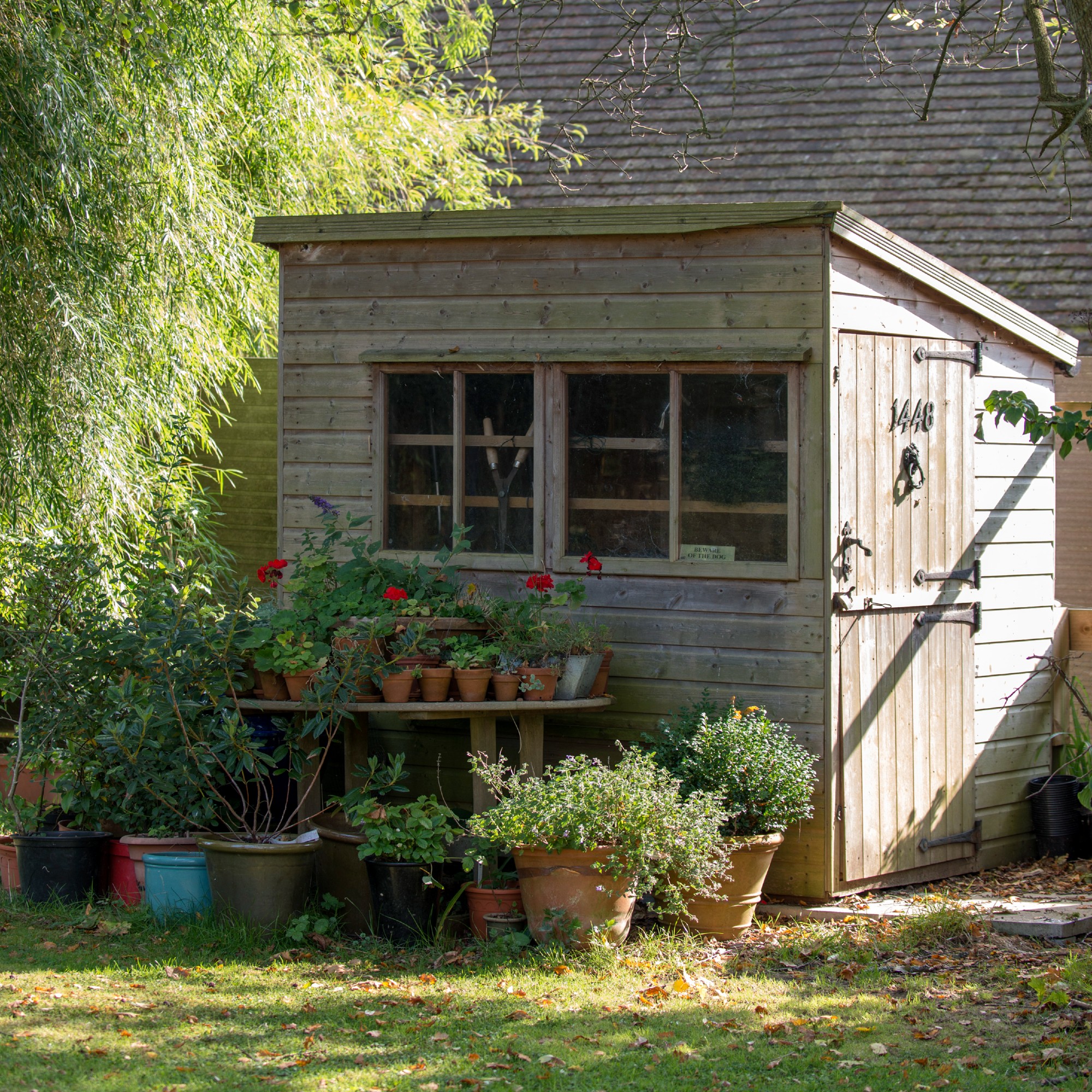
Knowing how to revive your lawn after winter will help turn your muddy, patchy, and waterlogged grass back into a luscious lawn in time for spring to come along.
With winter soon ending (hooray!), there’s never been a better time to start thinking about your lawn ideas for the upcoming spring and summer seasons. Whether you want to impress your neighbours with your perfectly manicured lawn or you want to embrace your wild side with an alternative low-maintenance lawn, swotting up on the best lawn care tips will help you bring these dreams to life.
But before you can start planting wildflowers or mowing your lawn stripes, you need to know how to revive your lawn after winter. This will help bring it back to life after the cold, wet, and frozen months and help it grow better than ever.
How to revive your lawn after winter
‘After a mild winter, many of us can’t wait to get back outside and start preparing our garden for the summer months. However, prolonged periods of frost can have a huge impact on our gardens, especially on grass surfaces,’ explains Caron Grant, Brand Manager at Bridgman. So, we’ve consulted with the experts to help you revive your lawn after winter.
1. Inspect and rake your lawn
The winter months can have a big impact on your garden, and your lawn can often take the brunt of that. In fact, you may find that your lawn is covered in leaves, broken branches, and even rubbish blown in from the many storms that we’ve experienced.
That’s why you should always inspect and rake your lawn before you start to revive it in any way. When it’s clean and clear of debris, you can then move on to the next step.

2. Aerate your lawn
While knowing how to aerate your lawn is an essential step for those looking to improve drainage in their garden, it’s also a necessary step for those looking to bring their lawn back to life after winter.
Steve Chilton, garden expert at LeisureBench, explains, ‘After winter, the soil will be compacted, which prevents air, water, and other nutrients from reaching the grass’s roots. Use a garden fork to create small holes for better airflow and drainage in your lawn.’
If you have a large garden and don’t have the time to create all of these holes yourself, you could make use of an actual lawn aerator - like this Greenkey Rolling Lawn Aerator from Amazon.
3. Scarify your lawn and remove weeds
When you’ve completed the aeration process, it’s then time to start scarifying your lawn. And while it would be handy to have a scarifier like this Magnusson Scarifier from B&Q to hand, you don’t necessarily need one.
‘Scarifying will help remove any layers of dead grass and moss. Use a rake or scarifier to do this, and it will help promote better growth in the spring and summer,’ says Steve.
This is also a good time to remove any weeds that you don’t want in your glass. Matt Kent, Landscape category manager at Toolstation, explains, ‘Make sure to check over your grass and remove any weeds by hand so they don’t absorb your lawn’s nutrients or harm its growth.’

4. Consider overseeding your lawn
This next step is down to personal preference. In fact, if you’re happy with the lush state of your grass and are lucky enough to have a patch-free lawn, you can skip to the next step. But if you’re struggling with patchiness or thinness, you might want to think about buying some grass seed.
Luckily, the best time to sow grass seed is from March to May, which means that reviving your lawn and sowing grass seed perfectly coincide with each other.
Steve says, ‘Select the same or similar grass variety and seed new grass in patches that might have died or might be a bit thinner. I recommend over-seeding, as this will ensure that the lawn is fully covered. You can always cut it back once it's grown alongside the previous grass.’
5. Fertilise your lawn
If you’re hoping to spend your spring and summer days admiring your perfectly green grass, fertilising your lawn during this time is also a good idea. You should make sure you choose the right fertiliser for the job, though.
‘This will help to promote new growth. You can either scatter by hand or by using a mechanised spreader but remember that you want to evenly cover the lawn, including the edges,’ explains Matt.
‘For the Springtime feed, you want to use quick-release fertiliser as this is a fast-acting fertiliser that typically lasts across six weeks. You also want to use a nitrogen-rich fertiliser as this will help to promote shoot growth.’

6. Water your lawn
After fertilising your lawn, it’s essential that you water it, too. However, you probably won’t have to grab your garden hose if the weather is still wet and miserable.
Steve says, ‘You could water your lawn, but the chances are that there will be plenty of rain between now and spring/summer when your lawn starts growing properly again.’
So, save some money on your water bill and let Mother Nature do the job for you!
7. Time your first mow
If you’ve recently added one of the best lawnmowers to your collection, you’re probably eager to get out there and start cutting your grass. Unfortunately, you might have to hold off for a bit longer.
You need to time your first mow perfectly and understand when to cut your grass for the first time after winter. Mow too early, and you may damage your grass.
‘Even if your grass is growing again, I don't recommend mowing it until the temperature has gotten relatively warm,’ urges Steve.
In fact, it’s generally a good idea to save your first mow of the year until the weather is consistently warm (i.e. it’s not forecasted to go down in temperature again), which is normally in March.

FAQs
Does grass come back after winter?
In an ideal world, yes. If you successfully prepared your lawn for the winter months, it should remain dormant throughout and then come back in full force when the weather warms up again. So that’s why it rarely grows during the colder months.
Of course, that’s not always the case. If your grass suffers from prolonged exposure to frost or waterlogging in winter, you may need to sow some more grass seed to perk it back up.
What is the best thing for grass after winter?
To revive your grass after winter, you should first clear your lawn of any debris and furniture so that you can give it your full attention. Then, do the following:
- Aerate your lawn.
- Scarify your lawn.
- Seed your lawn.
- Fertilise your lawn.
- Water your lawn.
Can brown grass turn green again?
Brown grass is a sure sign that your grass is dead, but that doesn’t mean that your whole lawn is going to suffer. Although the brown blades of grass won’t turn green again, the grass that grows in its place should be green.
It’s time to start bringing your lawn back to life!







